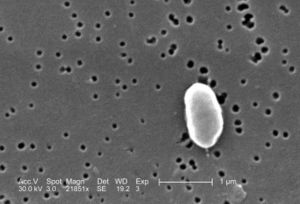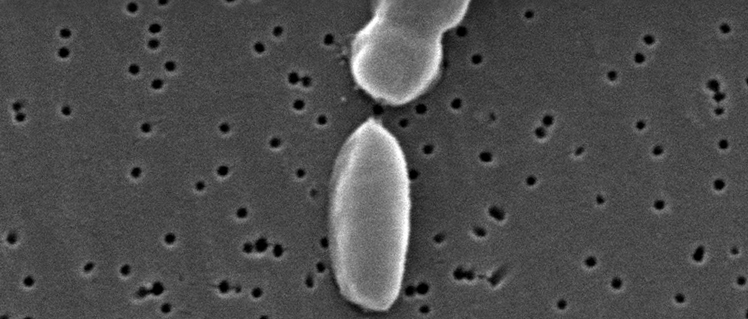Toxins
 After consumption of undercooked/raw seafood or having an
open wound in warm seawater, a Vibrio parahaemolyticus
caused illness is possible. This is all due to a specific
protein in the bacterium. Another poisonous bacteria is
Mycrocystis.
After consumption of undercooked/raw seafood or having an
open wound in warm seawater, a Vibrio parahaemolyticus
caused illness is possible. This is all due to a specific
protein in the bacterium. Another poisonous bacteria is
Mycrocystis.
In patients suffering from diarrheal symptoms, strains of isolated V. parahaemolyticus either contained a thermostable direct hemolysin (TDH), a TDH-related hemolysin (TRH), or in some cases both. According to Nair et al. (2007) "TDH has been shown to have hemolytic, enterotoxic, cardiotoxic, and cytotoxic activities." Studies show that TDH has a strong correlation with the disease. TDH is composed of pure protein. The main, possibly the only, lethal toxin created by the strains of V. parahaemolyticus is caused by the hemolysin in TDH or TRH.

This bacterium is gram-negative. However, the detail of pathogenesis by V. parahaemolyticus is unclear. But in other gram-negative pathogens, the usual physiology upsets the intestinal mucous membrane of the host. This is completed by influencing cytoskeleton arrangements, proinflammatory responses, and possibly cell death as well. Bacterial effecter proteins start these cellular events. The proteins are delivered and regulate the activities of host cell proteins in the intestinal cells. The proteins are then hidden and translocated into host cells through a macromolecular assembly of over 20 proteins in a needle-like formation titled the TTSS. TTSS1 and TTSS2 were found on the large and small chromosomes of this species. This bacterium can also be classified.
 Vibrio parahaemolyticus classification is done by a serotyping scheme
of strains. The classification is dependent upon the
antigenic properties of the two antigens, the somatic (O) and
capsular (K). There are 11 different O and 71 different K
antigens.
Vibrio parahaemolyticus classification is done by a serotyping scheme
of strains. The classification is dependent upon the
antigenic properties of the two antigens, the somatic (O) and
capsular (K). There are 11 different O and 71 different K
antigens.
The serotypes of V. parahaemolyticus are mostly different wherever you test the isolate. The O3:K6 serotype has been found to originate in the marine environment of Japan. O3:K6 was the first serotype noted in 1995, but probably was discovered between 1983-1988. In northern India, the serotype O1:K56 was dominant in diarrheal cases. Therefore, the infection had a serotype O1:K56. These other serotypes diverged from the O3:K6 serotype which seems to be the original isolate. These other serotypes are known as serovariants and can be found worldwide.
Serotypes may change due to location. An example is that there seems to be a more virulent serotype, O4: K12, in the Pacific Northwest where more human illnesses caused by V. parahaemolyticus are reported compared to the Gulf Coast; on the Gulf, a more pathogenic strain in shellfish is reported rather than in the human sicknesses.
Go to Nutrition & Reproduction to learn how this species survives as well as reproduces.
